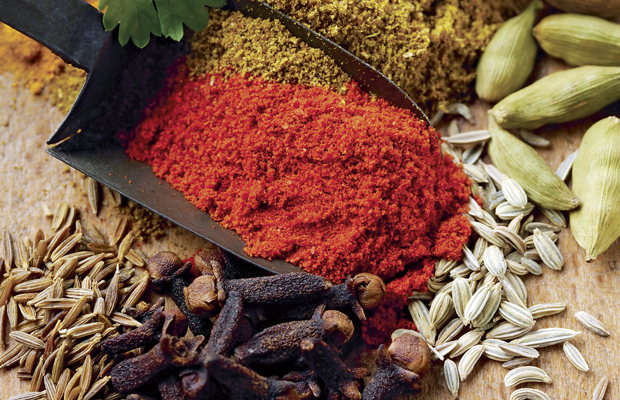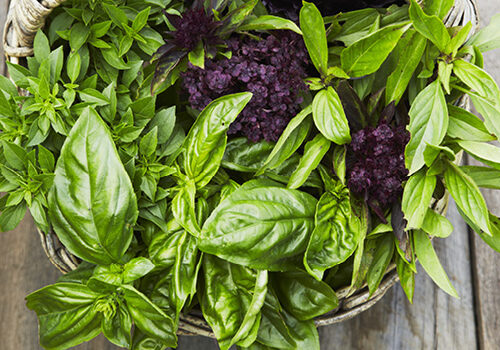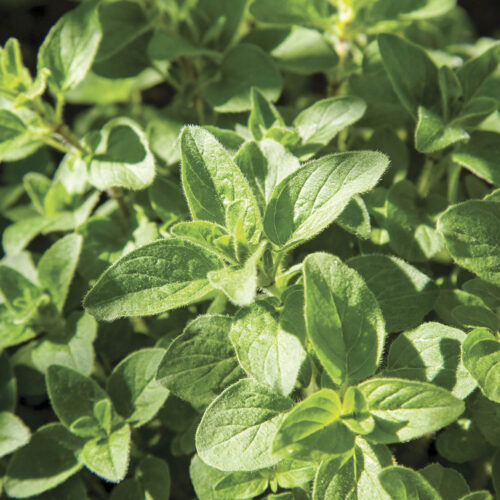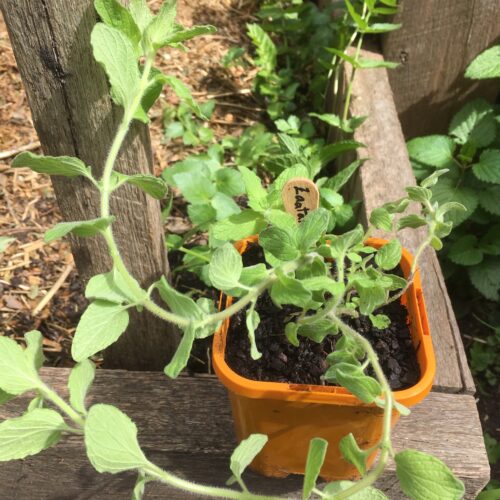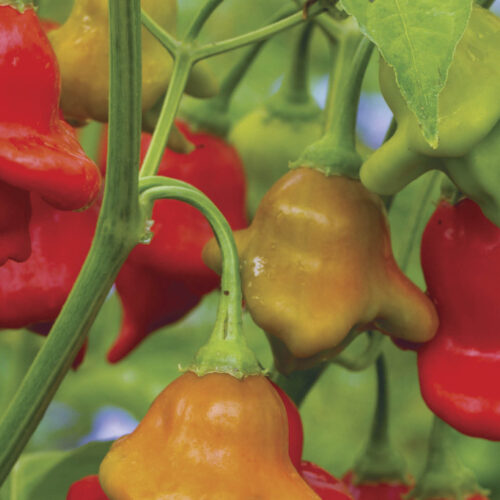Mixed spices
2016-03-30T22:50:29+11:00
Home gardeners might consider spices too unusual and tricky to grow, but PENNY WOODWARD says there are good choices for warm and cool climates.
Spices have been used throughout history in many different ways: from flavouring, colouring and preserving food to medicinal and religious practices as well as a valuable trade item. The spices that resonate in historical tales, such as pepper and vanilla, come mainly from the tropical regions of the world, while common annuals such as cumin can be grown in a wide range of climates. Wherever you are there is more than one spice you can try growing. Here are some favourites.
Cardamom
Cardamom (Elettaria cardamomum) is grown for its fragrant pods and seeds, and does best in tropical and subtropical regions. It grows naturally as an understorey plant in rainforests. While it grows well in cooler regions, unless given special care, it usually won’t flower and produce pods. Rhizomes put up strong, linear fragrant leaves to about 80cm high. The white flowers grow in spikes at the base of the plant. Oval seed pods are very aromatic and green when fresh. Each contains up to a dozen black seeds. Pick pods while they are green and dry in the sun until they turn pale brown.
Grow from pieces of rhizome planted from autumn to spring, with one or more growth buds placed about 5cm deep and spaced about 50 cm apart. Cardamom likes a nutrient-rich, open, loamy, well-drained soil with plenty of organic matter. In cooler regions grow in a large pot in a greenhouse or sheltered verandah and cover with clear plastic to maintain warmth and humidity and you may get it to flower. Remove the plastic once shoots appear. While plants need to be kept moist and frequent misting aids growth in regions with dry summers, they don’t like to be waterlogged.
Cinnamon
Cinnamon (Cinnamomum zeylanicum) grows best in the tropics and subtropics. It can be grown from cuttings, but it’s better to purchase a tree. These can be found in nurseries in warmer regions. In the tropics, cinnamon will grow into small trees but most gardeners grow them as bushes or in pots. Plant into compost-rich, fertile, well-drained soil and mulch carefully during dry weather.
Use shade-cloth to protect young plants from the hot sun and keep them watered during the dry season, but otherwise they need little care. Once the bush is well established, cut back 50 per cent of the branches to 15cm above the ground. This partial coppicing causes more branches to grow from the base; these are harvested two years later.
Cinnamon comes from the inside bark of these branches, so strip back the external bark and then carefully remove the next layer. Leave this to dry in the sun before using. Much of the ‘cinnamon’ sold today actually comes from various species of Cassia, and the flavour is more savoury and less sweet, nor does it have the same culinary or medicinal properties.
Clove
Cloves (Syzygium aromaticum) are the unopened flower buds of this tropical tree, a relation of lilly pilly and eucalypts. Clove trees are best grown from cuttings or grafts. Plant clove trees into pots or in the ground with plenty of organic matter and good drainage. Young trees need a shady or semi-shaded position for protection from intense summer sun and must be well watered, but not overwatered as they are very prone to fungal attack.
These trees need high humidity and temperatures over 12°C, so in cooler regions can only be grown in heated and humidified greenhouses. Fertilise with manure and trace elements twice a year. Flower buds develop slowly and may take six months to turn from green to pinkish red. Harvest once they have developed good colour and dry in the sun for seven days. Eugenol, the volatile oil that gives cloves their distinct flavour, is developed during the drying process.
Cumin
Cumin (Cuminum cyminum) is an annual in the Apiaceae family with typical umbrella-like flower heads and fine, linear blue-green leaves. Plants tend to be a bit floppy and top-heavy when the pale pink flowers are pollinated and start developing seeds. The long slender seeds are pale brown with an earthy, fragrant, warm scent and flavour.
Cumin grows in temperate and semi-arid regions in a warm and sunny (but not too hot) position, with a compost-rich, well-drained soil. Sow seeds in spring or autumn, directly where they are to grow, then cover them with a thin layer of soil and water well. Don’t let them dry out.
Once plants are growing well, water with diluted seaweed extract and fish emulsion every few weeks and thin to about 20cm apart. Flowers are followed by seeds that are harvested once they turn from green to brown. Pick the whole flower head and up-end into a paper bag. Once dry, seeds drop to the bottom of the bag.
The more familiar fennel, dill, coriander and caraway seeds are grown and harvested in similar ways and they too make a delightful addition to the spice cupboard.
Pepper
Pepper (<em>Piper nigrum) is a perennial with woody stems that can grow triffid-like – as much as 5m in one season. In the wild they climb through trees, but in agriculture they are generally trained up 4m-wooden poles. Leaves are shiny and bright green while the white flowers form hanging spikes and are followed by green berries that turn red when ripe. Pepper vines need rich, well-drained soil and a semi-shaded to shaded position. New plants are usually grown from cuttings taken in spring, but can also be grown from seed. Pepper is a tropical plant and can only be grown in temperate regions in heated greenhouses. Green, white and black peppercorns all come from the same vine. Green peppercorns are immature berries. Black pepper is actually green peppercorns that are sun-dried until they turn black. White pepper is the inner core of ripe berries, sun-dried once the red skin is removed.
Saffron
Saffron (Crocus sativus) grows in temperate and arid regions from a corm about 3cm in diameter. In autumn, about 10 linear grey-green leaves grow from the corm, fairly closely followed by one or two translucent, ephemeral purple flowers. Flowers last only a few days, so you need to be vigilant to harvest the three blood-red stigma. Gently pluck them from the centre and spread onto tissue paper to dry, in a dry cool place out of direct sunlight.
The whole plant disappears in spring and reappears in autumn, and it may take several years for the flowers to appear. Purchase and plant corms from February to April, 30cm apart in a sunny, well-drained position in a compost-rich soil. Saffron needs long periods of sunlight to grow and flower and relishes dry summers and cool winters.
Vanilla
Vanilla (Vanilla planifolia) is a tropical orchid that grows as a fleshy vine. Greenish yellow flowers appear from August to December and must be hand-pollinated before the long (up to 25cm) green pods will grow. Flowers open just before sunrise and begin to wilt after midday, so pollination must take place during this period. Although flowers are self-fertile, pollination is quite tricky so many growers use a toothpick to move the pollen from the anther to the stamen. Tip pruning forces flower production and keeps flowers within reach for pollination and harvest.
While these orchids are relatively easy to grow in the tropics, or in a heated greenhouse where temperatures don’t drop below 15°C (vanilla is grown in a greenhouse in Kew Gardens in the UK), curing the pods is much more complicated. Curing involves steaming, fermenting and drying in the sun, and can take anything from one to 18 months, depending on how it is done. New vanilla vines are grown from stem cuttings and prefer an open bark, charcoal and pumice mix as well as daily misting of the aerial roots.
For more pictures of the spices, and how to cook with with them, see the complete article and celebrity chef Christine Manfield’s guide starting on page 26 of the January/February 2016 issue of Organic Gardener magazine.
FOR MORE INFORMATION
- The tropical trees and vines can be found at specialist nurseries in subtropical and tropical regions and can be ordered online, but are rarely available anywhere else.
Try Daleys Fruit Tree Nursery (www.daleysfruit.com.au) and
All Rare Herbs (07 5446 9243, www.allrareherbs.com.au). - For more detailed information on vanilla see Vanilla Orchids, Natural History and Cultivation, by Ken Cameron or this segment of ABC’s Landline:
http://www.abc.net.au/landline/content/2012/s3596115.htm - The Spice and Herb Bible by Australian spice guru Ian Hemphill with recipes from his daughter Kate Hemphill.

